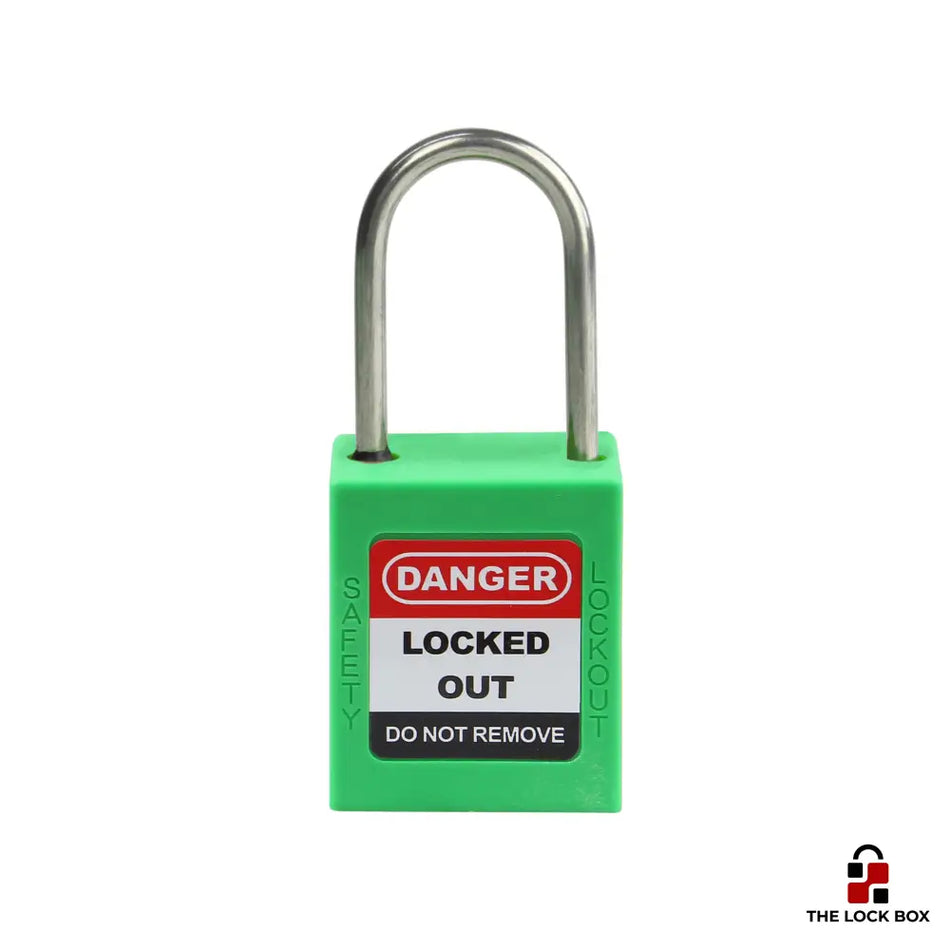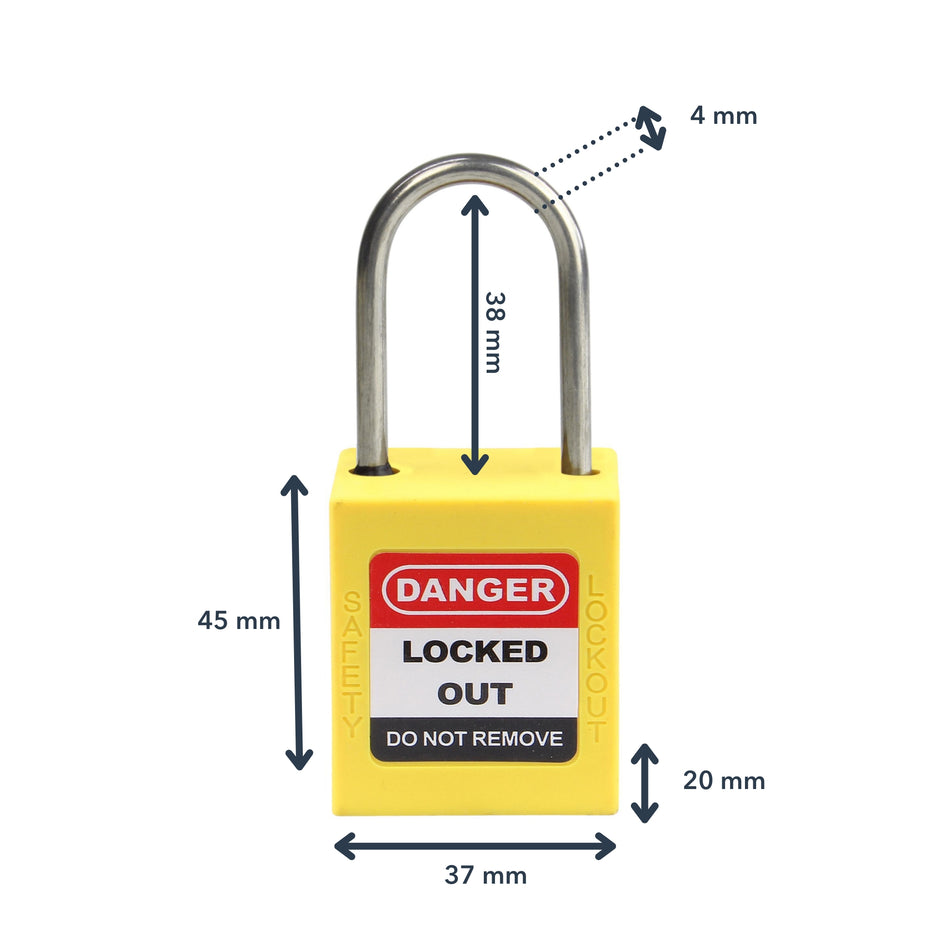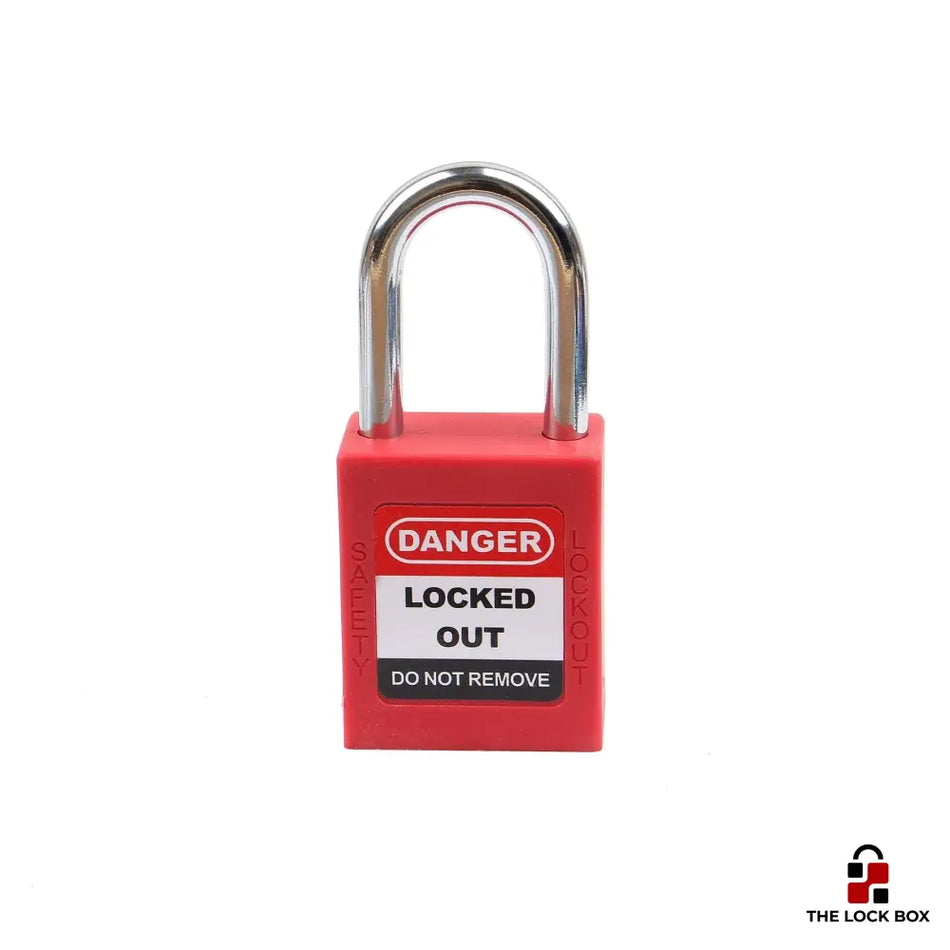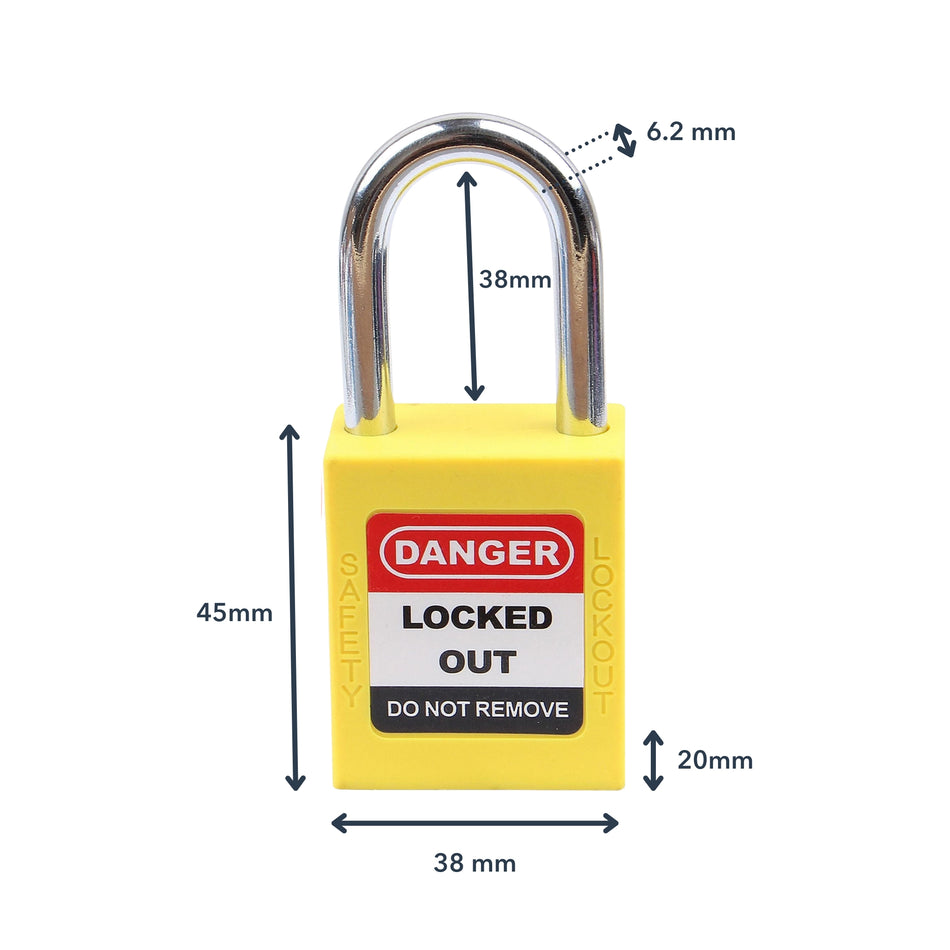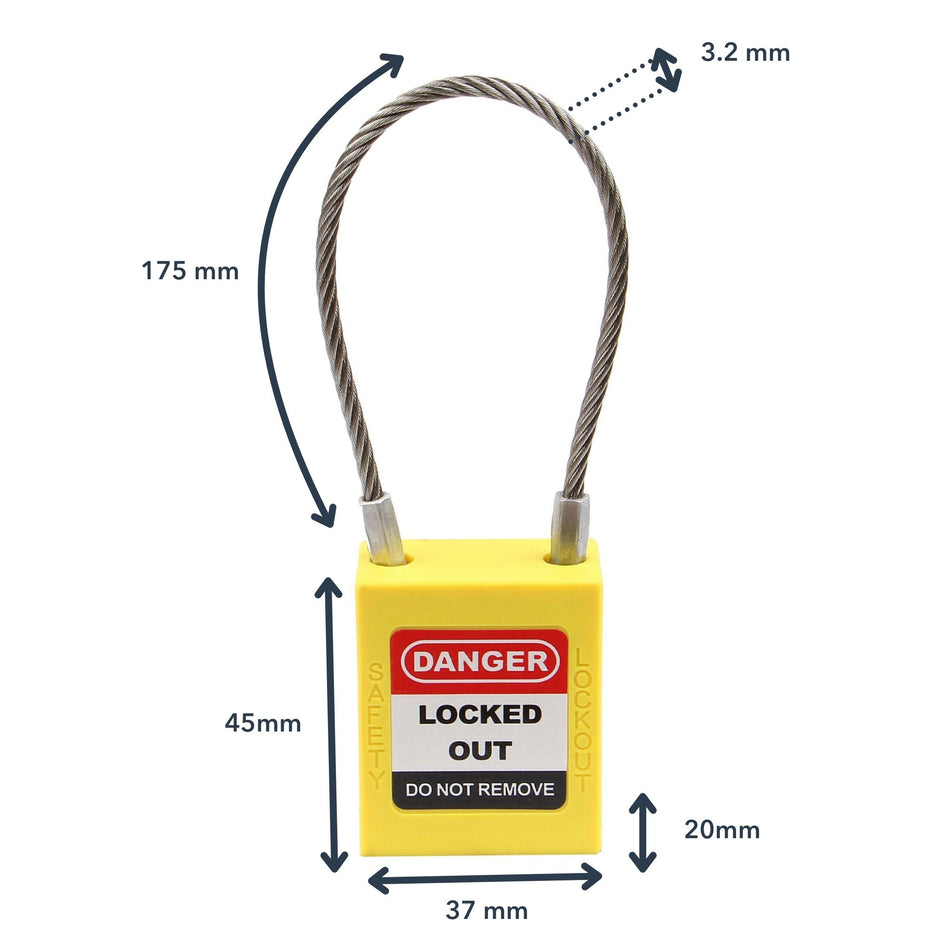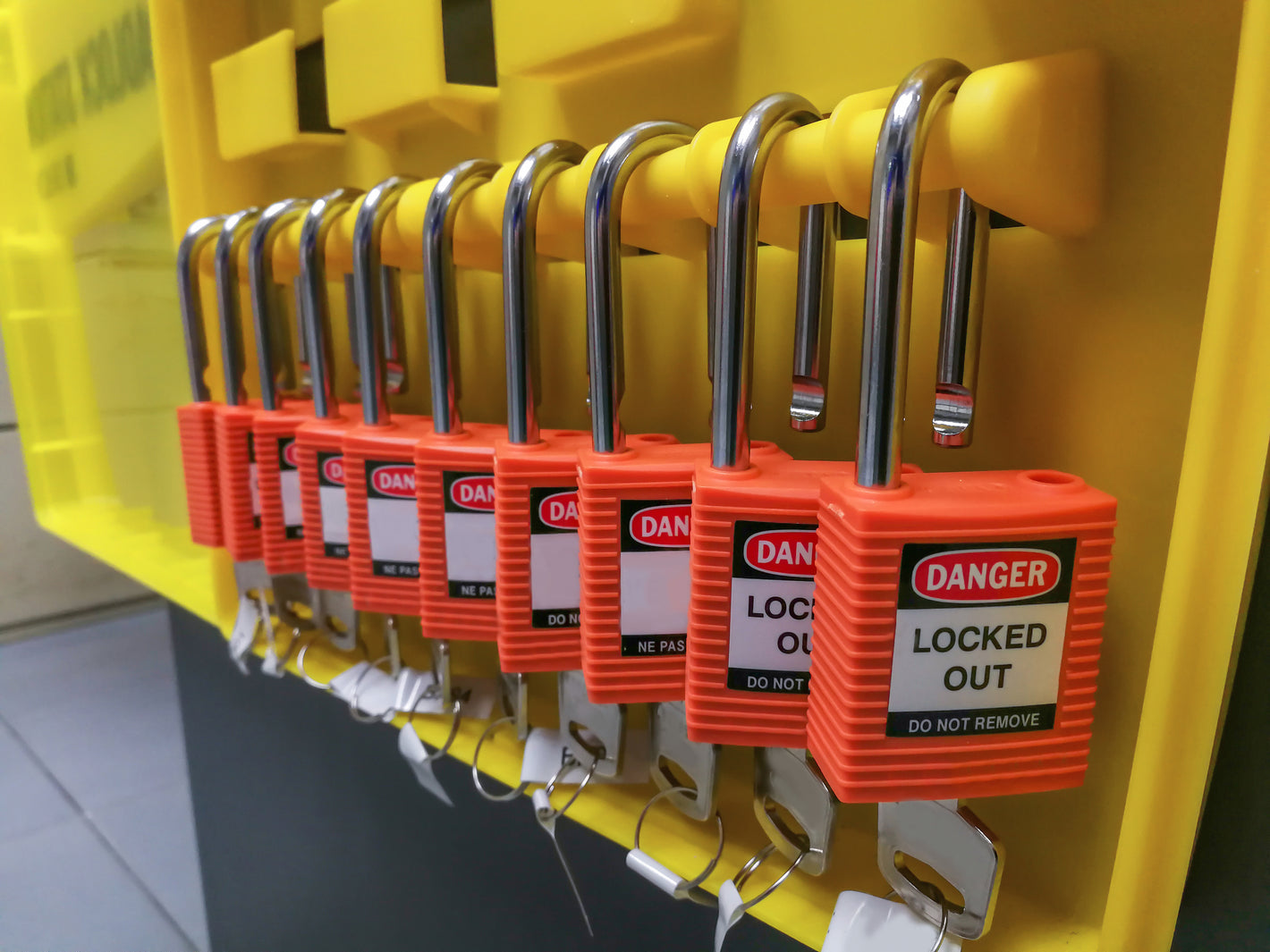What are Lock-Out-Tag-Out Kits?
Lockout-Tagout (LOTO) refers to procedures used to control and deactivate hazardous energy during maintenance work. These procedures are essential for preventing workplace accidents and injuries.
A Lockout-Tagout kit is a toolkit specifically designed for these procedures. It contains padlocks, safety tags, locking devices, and other tools that can help safely shut down machines or equipment.
Why are Lockout-Tagout Kits Important?
In many work environments, there are potentially hazardous machines or equipment that could cause injuries during maintenance work. By using LOTO procedures and kits, workers can be protected by ensuring that these machines are not accidentally re-energized while maintenance work is being performed.
Additionally, the proper use of LOTO procedures and kits can help ensure compliance with safety regulations and standards.
What Should Be Included in a Lockout-Tagout Kit?
A good LOTO kit should include at least the following tools:
- Padlocks: These are used to secure switches or valves on machines or equipment. They should be sturdy and unique so that only authorized personnel can open them.
- Safety tags: These are attached to padlocks to provide additional information, such as the name of the responsible employee or the reason for the lockout.
- Locking devices: These are used to secure locking positions on machines or equipment and prevent them from being accidentally re-energized.
- Warning signs: These should be placed visibly to inform other employees of the status of the machine or equipment.
Other tools such as cable ties, insulation tape, and key storage boxes can also be part of a LOTO kit, depending on specific workplace requirements.
How Should Lockout-Tagout Procedures Be Carried Out?
LOTO procedures must be carried out by trained and authorized personnel. Here are the steps typically followed in a LOTO procedure:
- Preparation: Identify the machine or equipment to be serviced and ensure that all necessary tools are included in the LOTO kit.
- Shutdown: Ensure that all power sources to the machine are turned off and test this with a voltage tester if necessary.
- Lockout: Attach a padlock to each switch or valve to ensure that no one can turn on the machine.
- Release and drain energy: Ensure that all stored energy in the machine is released or drained, for example, by opening valves or releasing pressure.
- Lock and tag locking devices: Ensure that all locking devices are properly locked and labeled with warning signs.
- Perform maintenance or repair: The machine can now be safely maintained or repaired as all energy sources are isolated.
- Final check: Ensure that all steps were performed correctly and everything is properly secured before the machine is turned back on.
- Remove locks: Once maintenance or repair work is completed, the padlocks can be removed.
- Restore power: Only restore power to the machine once all personnel have left the work area and warning signs have been removed.
- Monitoring: Monitor the machine carefully after the LOTO procedure to ensure everything is functioning properly.
It is important to regularly review and adjust which machines in your company are subject to a LOTO procedure. New machines or equipment must also be added to the list to ensure the safety of all employees. Regular training and refresher courses for all employees are also important to ensure that the LOTO procedure is properly understood and applied.
Additionally, it is important that each employee understands and takes their responsibility seriously when it comes to adhering to the LOTO procedure. It should be a collaborative approach where everyone works together to ensure workplace safety.
Moreover, all employees should be informed of potential risks and hazards associated with the machines and equipment. Regular inspections and maintenance by qualified personnel can also help identify and mitigate potential hazards early.

The 6 Steps of Lock Out Tag Out
Practical Guide to Safely Shutting Down Machines and Equipment
- Preparation: Before starting the LOTO procedure, gather all relevant information about the machine or equipment, including operating manuals and wiring diagrams. Ensure that all employees are informed and understand the procedure.
- Identification of energy sources: Check all energy sources such as electrical, pneumatic, hydraulic, or gas supplies. Clearly mark or label these to avoid confusion.
- Lockout of energy sources: Turn off all energy sources and apply locks if necessary to ensure they cannot be accidentally turned back on.
- Release stored energies: Discharge all stored energies such as pressure or residual voltage by opening safety valves or discharging capacitors.
- Attach locks and warning signs: Ensure that energy sources are secured with appropriate locks and warning signs to prevent accidental re-energization.
- Test the locks: Verify that the machine or equipment is truly shut down and cannot be restarted before performing maintenance or repair work.
These 6 steps should be carried out in a specific order and only by qualified personnel. Regular review and documentation of the LOTO procedure are also important to ensure safety and effectiveness.
Other important aspects of applying the LOTO procedure include communication between the involved employees and the provision of appropriate tools and personal protective equipment. It is also important to regularly review and update the procedure to ensure it meets current standards and regulations.
Lockout Stations
Storage and Organization of Locks and Tools
To effectively carry out the LOTO procedure, it is important that all necessary locks, padlocks, and tools are easily accessible and well organized. Special lockout stations can be used to securely store these items.
Lockout stations come in various sizes and designs. They should not only provide enough space for storing locks but also include appropriate holders for padlocks, circuit breakers, and other tools. Clear labeling of the stations can help quickly find the correct items.
It is also important that the lockout stations are placed in visible locations near the affected machines or equipment so they can be quickly found in case of an emergency. Regular inspections and inventories should be conducted to ensure that all necessary locks and tools are available and ready for use.
Lockout Tagout Sets
Combined Sets for Installers and Maintenance Technicians
For individuals who frequently work on various machines and equipment, it can be helpful to use a lockout tagout set. These sets usually contain a selection of locks, padlocks, circuit breakers, and other tools suitable for different types of energy controls.
Using pre-packaged sets ensures that all necessary components are present and that no important elements are forgotten. They can also help save time since individual components do not need to be gathered separately.
Some manufacturers also offer specialized sets for specific industries or applications, such as lockout tagout sets for electricians or installers. These may include additional tools and materials required for these specific tasks.

Lockout Kits
Special Kits for Securing Machines and Equipment
Lockout kits are specialized sets designed for securing specific machines and equipment. They typically contain all the necessary locks, tools, and instructions to perform proper shutdown and tagging.
These kits can be very helpful when dealing with more complex or larger machines where multiple energy controls are involved. Using specialized kits ensures that all relevant energy controls are considered and no important steps in the shutdown process are forgotten.
Securing Energy Sources
Padlocks and Multi-Hasps
Padlocks and multi-hasp devices are essential tools for securing energy sources. Padlocks are used to lock switches, valves, or other energy controls, preventing them from being accidentally activated.
Multi-hasps are special devices that allow multiple padlocks to be attached to a single lockout point. This is especially useful in situations where multiple people need to work on different parts of the same equipment simultaneously. By using multi-hasps, each person can apply and control their own padlock, ensuring that the energy source cannot be reactivated until everyone has removed their locks.
Information Communication and Identification
Tags and Labels
In many cases, securing the energy controls alone is not sufficient. It may also be necessary to clearly label the affected machines or equipment and provide information about the shutdown status.
Tags and labels are suitable tools for this purpose. They can be attached to locked switches or valves and provide important information such as the reason for the shutdown, the responsible person's name, and the date of the shutdown.
Some manufacturers also offer customizable templates for tags and labels to ensure that all necessary information is clearly and accurately provided.
Applications of Lockout-Tagout
Improving Workplace Safety
The application of lockout-tagout procedures can significantly improve workplace safety. By using padlocks and multi-hasps, it is ensured that only authorized personnel have access to energy controls. This prevents accidents caused by the accidental activation of machines or equipment.
Additionally, tags and labels serve as a clear and visible reminder of the shutdown, which can encourage workers to be more cautious and aware that a machine or piece of equipment should not be operated.
Compliance with Regulations and Standards
The use of lockout devices is legally required in many countries. In the United States, for example, the Occupational Safety and Health Administration (OSHA) mandates under the Control of Hazardous Energy Standard (29 CFR 1910.147) that employers implement a lockout/tagout program to protect their employees from hazardous energy sources.
Moreover, certain industries, such as the electrical and chemical industries, require specific lockout-tagout guidelines to ensure compliance with legal requirements and standards related to lockout tagout systems.

